The History of Azadi Tower in Tehran
Azadi Tower, also known as Freedom Tower, stands tall as a sentinel overlooking Tehran and welcoming visitors worldwide.
This iconic landmark is a silent witness to Iran's major historical events, symbolizing the country's rich culture and history.
It was initially built as a tribute to the 2,500th anniversary of the Persian Empire and has captured the hearts and imaginations of locals and visitors alike since its construction in 1971.
With its striking architecture and commanding presence, Azadi Tower beckons us to explore the stories and secrets hidden within its walls. Join us on a journey through the history of one of Tehran's most beloved landmarks.
The Birth of Azadi Tower
The birth of Azadi Tower is a story of perseverance, creativity, and national pride. In 1966, the Shah launched a competition to design a monument to commemorate his rule and to celebrate the 2500th anniversary of the Persian Empire.
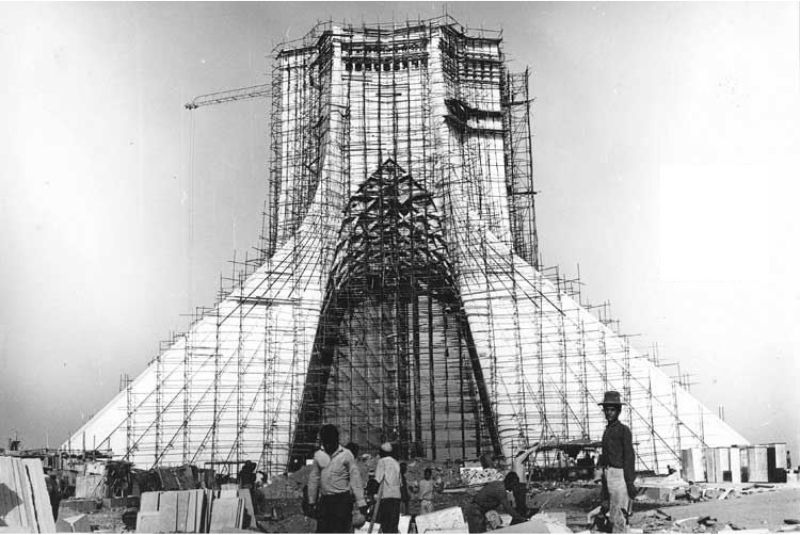
Architect Hossein Amanat, fresh out of the University of Tehran, was inspired by the opportunity to create a lasting tribute to his country's history. Amanat abandoned his plans to study in the United States and formed a small architecture studio in his bedroom to work on the design.
Amanat's design, inspired by his fascination with Persian history, won the competition. He describes the design as the culmination of everything he had learned in architecture school and his travels around Iran, citing many historical precedents as influences.
On October 16, 1971, the tower's inauguration took place, marking a new chapter in the country's modernization and industrialization. However, it was not until January 14, 1972, that the tower was open to the public, allowing Iranians to marvel at the towering structure that represented their country's journey towards higher levels of achievement.
The Origin of Azadi Tower's Name
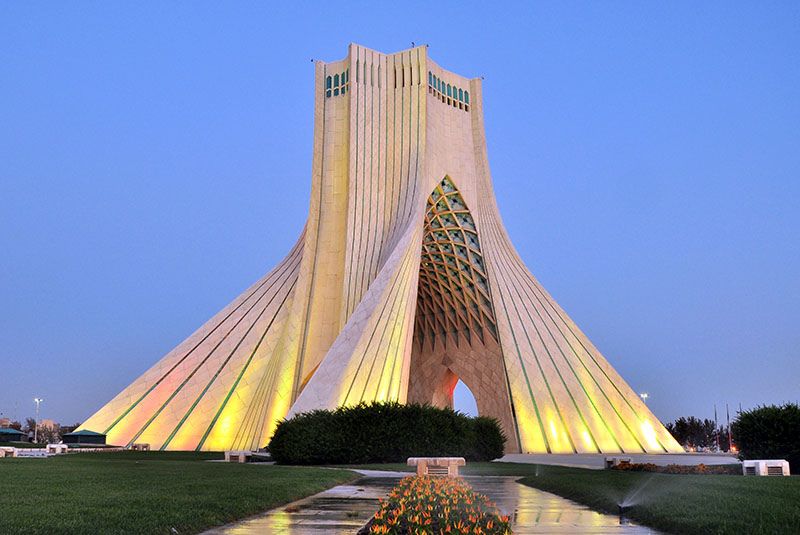
The name of a monument usually carries deep meaning and significance, and Azadi Tower is no exception. The monument's first name, Darvāze-ye Kuroš, or "Gate of Cyrus," reflected the monument's original purpose as a grand gateway into the city of Tehran. Later, during the Centenary Celebrations, Asadollah Alam referred to the monument as Darvāze-ye Šāhanšāhi, or "Imperial Gate".
However, it was Bahram Farahvashi, a scholar and professor of ancient Iranian languages who worked with the Council of Celebrations, who ultimately came up with the official name of the structure: Shahyad Aryamehr meaning "Shah Ariamehr's Memorial," in honor of the then-ruling Shah, Mohammad Reza Pahlavi. This name was chosen before the announcement of the competition for the monument's design in September 1966. It reflected the monument's original purpose as a tribute to Shah's rule and the Persian Empire's legacy.
Following the 1979 Revolution, the monument was renamed Azadi, meaning "Freedom," reflecting the new era of independence and democracy that the revolution symbolized. This name change highlighted the monument's role as a symbol of Iran's enduring spirit of freedom and independence.
Today, Azadi Tower stands tall as a testament to Iran's rich cultural heritage and history, with its name reflecting the evolution of Iran's political and cultural landscape over time.
Azadi Tower Architecture and Design
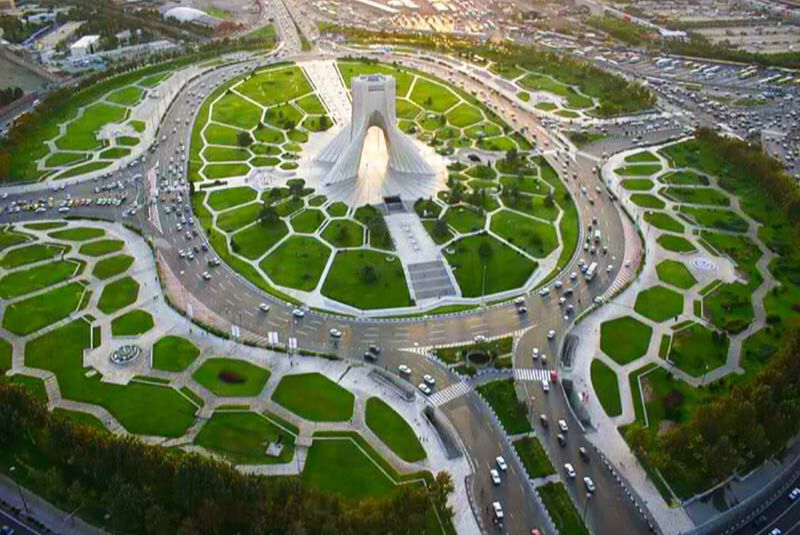
Azadi Tower is a sixteen-sided structure with an oval dome over two stories on the top and two stories under the ground. The entrances to the tower are two huge granite doors, each weighing about 5.3 tons. The tower also comprises 46,000 pieces of stone and 8,000 pieces of white marble, joined by flexible sealant, giving it a brilliant picture.
The construction of the Azadi Tower was a magnificent feat of modern architecture, blending seamlessly with the traditional elements of Achaemenian and Sassanid architecture along with Islamic influences.
One of the fascinating things about the Azadi Tower is its location at the epicenter of Azadi Square, the second-largest square in Iran after Naqsh-e Jahan Square. The square's gardens and water fountains are reminiscent of historic Iranian gardens, and the slopes were designed to facilitate irrigation and augment the importance and height of Azadi Tower.
Azadi Tower also stands tall at 46 meters, with its height limited due to its proximity to the airport. However, the tower's careful use of arcs in its design gives it a sense of ascension, while the marble ornamentation of the facade adds a robust and archaic impression.
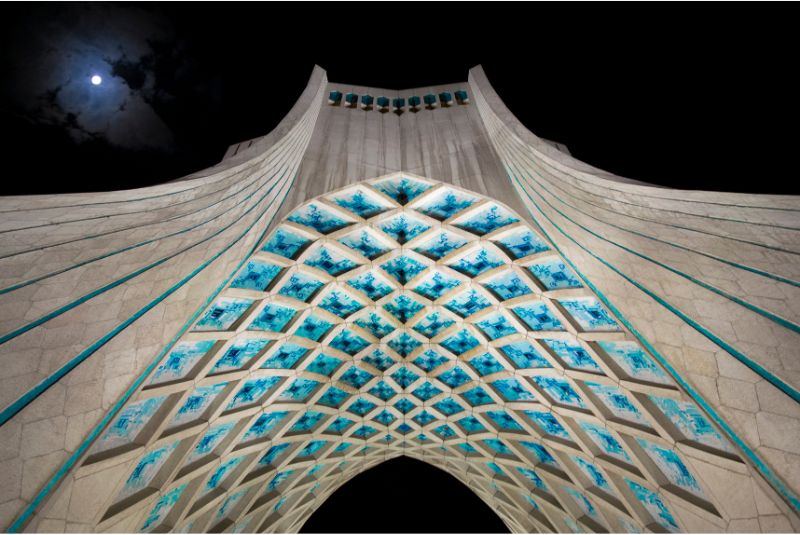
The curved arch of the tower is highly inspired by the Sassanid four arches, specifically Taq Kasra, while the four huge striate pillars are reminiscent of the Achaemenian gallant columns.
The upper body of the tower is inspired by Iranian Badgirs, the traditional air conditioning system, and its eastern underpasses imitate traditional Iranian bazaars, creating a unique blend of modern and traditional architecture.
The interior design subtly imitates the Vakil Mosque while incorporating a futuristic approach, resembling scenes from a science fiction movie.
The basement is 5 to 15 meters under the ground level and houses several interconnected galleries and facilities, including the Azadi Museum, which currently exhibits artifacts from the Sassanids, Achaemenids, and Arcasid periods, along with a wealth of Qajar jewelry.
The Hall of Contemporary Technology is also an amusing part of the basement, displaying outdated technology such as a pianist robot from the 1970s and a rack of low-resolution monitors connected to a bulky computer.
Historical Significance of Azadi Tower
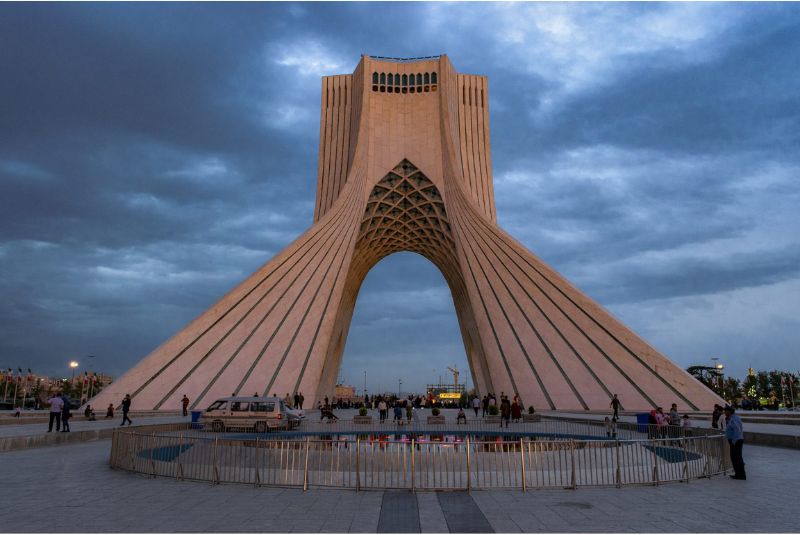
The Azadi Tower has immense historical significance, as it was built originally to symbolize the kingdom's aspiration for the ancient power of pre-Islamic Iran. The symbolic importance of the building was further enriched by burying an inscribed golden plate weighing a kilogram in the tower's foundation.
In addition, On January 14, 1972, in the opening ceremony of the Tower, The Shah unveiled the Cyrus Cylinder, the world's first bill of rights, issued by Cyrus the Great in 539 BC. The Azadi Tower also played a major role in toppling the Pahlavi regime by providing millions of people a stage to gather in revolutionary rallies.
Azadi Tower as a Historic Venue for Cultural Events
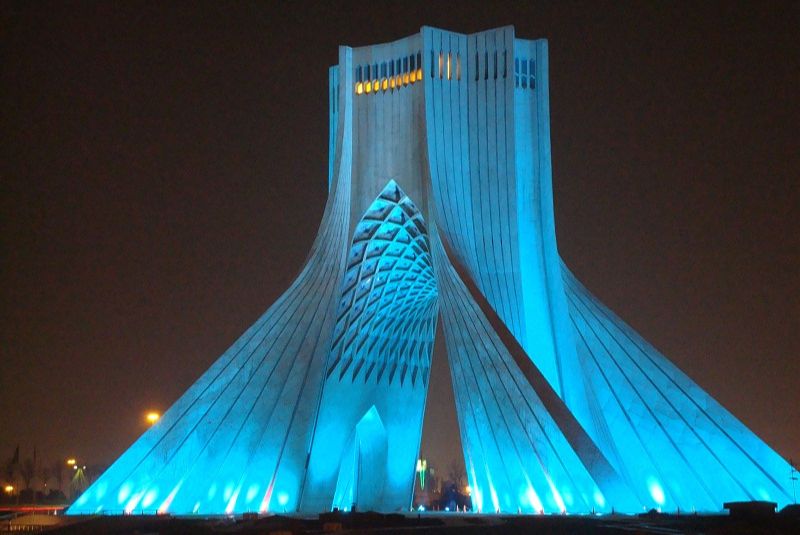
The Azadi Tower has been the site of many important events throughout its history, showcasing the versatility and cultural significance of the structure.
One such event was the audiovisual theatre show in 1971, which was replaced by a new one in 1975. The new show invited visitors to discover Iran's geographic and natural diversity, along with its fundamental historical elements and exhibited several national achievements, technical undertakings, calligraphed poems, and miniature paintings.
The project was devised by a Czechoslovak company and required 12,000 meters of film, 20,000 color slides, 20 movie projectors, and 120 slide projectors. The audiovisual programs were directed by Professor Jaroslav Frič, and five computers operated the entire system.
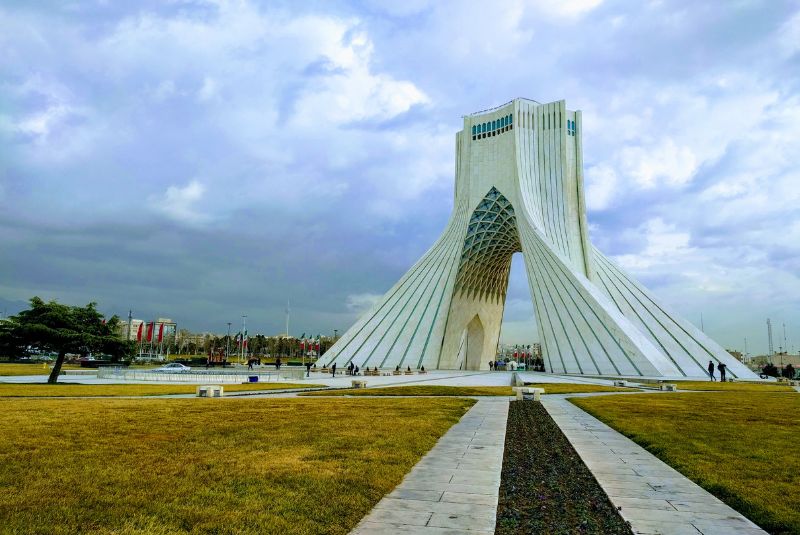
In 2015, the Azadi Tower also hosted the Gate of Words light show, organized by German artist Philipp Geist on the occasion of German Unity Day. The show was held from October 3 to 5 and showcased the topics of freedom, peace, space, and time in a poetic manner.
Geist developed a light installation made of colored words and concepts in different languages, along with abstract painterly compositions of images. The glowing words were in English, German, and Persian, moving in sync with live music on the tower's walls. This event was a stunning display of the tower's versatility as a cultural hub and its ability to showcase art uniquely and innovatively. These events and many others hosted at the Azadi Tower have cemented its status as a landmark cultural destination in Iran.


Comment
Leave a Comment